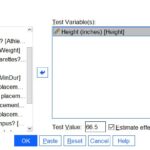Finding discrepancies between two Excel files can be a tedious task, especially when dealing with large datasets. Whether you’re tracking inventory, managing customer data, or reconciling financial records, knowing how to efficiently compare Excel files for missing data is crucial. This article outlines various techniques to pinpoint missing information quickly and accurately.
Utilizing Spreadsheet Compare for Discrepancy Detection
Microsoft’s Spreadsheet Compare tool, available in Office Professional Plus and Microsoft 365 Apps for enterprise, offers a robust solution for comparing two Excel workbooks. This tool allows you to identify differences in formulas, macros, cell formatting, and most importantly, data.
To compare two Excel files:
- Launch Spreadsheet Compare: Find it via the Start Menu or by searching for “Spreadsheet Compare.”
- Select Files: In the “Compare Files” dialog box, use the folder icons to browse and select the two Excel files you wish to compare. You can even compare files stored online via a web address.
- Specify Comparison Options: Select which elements to compare, such as formulas, values, or formatting. Choosing “Select All” compares every aspect.
- Initiate Comparison: Click “OK” to start the comparison process. You may be prompted for passwords if either file is protected.
- Analyze Results: The results display in a two-pane grid, highlighting differences with color-coding. The left pane represents the “Compare” file (usually the older version), while the right represents the “To” file (typically the newer version). A legend at the bottom clarifies the meaning of each color.
Spreadsheet Compare meticulously analyzes worksheets, even hidden ones, pinpointing discrepancies in entered values, calculated values, and formulas.
Leveraging Excel’s Inquire Add-in for Deeper Analysis
Beyond Spreadsheet Compare, Excel’s Inquire add-in provides advanced analysis capabilities. This add-in enables you to:
- Analyze Workbook Relationships: Understand connections between cells, worksheets, and external workbooks.
- Clean Excess Formatting: Remove unnecessary formatting that can bloat file size and impact performance.
- Compare Workbooks: Initiate Spreadsheet Compare directly from the Inquire tab.
To activate the Inquire add-in, go to Excel Options > Add-Ins > Manage Excel Add-ins > Go and check the “Inquire” box.
Exploring Alternative Methods for Data Comparison
For scenarios not requiring the full functionality of Spreadsheet Compare, consider these alternative approaches:
- Visual Inspection: For small datasets, manually comparing files side-by-side can be effective.
- Sorting and Filtering: Sort both files by a key column and then visually scan or use filters to identify missing rows.
- Conditional Formatting: Use conditional formatting to highlight differences in values between two ranges of cells.
- VLOOKUP Function: Employ the VLOOKUP function to search for matching data in one file based on values from the other, identifying any missing entries.
Conclusion: Choosing the Right Comparison Method
Selecting the appropriate method for comparing Excel files for missing data depends on the complexity and size of your data. Spreadsheet Compare offers a comprehensive solution for intricate comparisons, while alternative techniques provide simpler approaches for less demanding tasks. By understanding these methods, you can efficiently identify data discrepancies and ensure data accuracy across your Excel workbooks.

